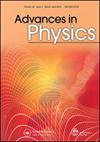电子自旋光学控制的量子计算
IF 13.8
1区 物理与天体物理
Q1 PHYSICS, CONDENSED MATTER
引用次数: 99
摘要
本文综述了利用光学控制量子点中电子自旋实现大规模量子计算的进展和主要挑战。相关体系包括III-V或II-VI化合物半导体(如InGaAs和CdSe)的自组装量子点,化合物半导体量子阱中的单层涨落量子点,以及固体中的杂质中心,如硅中的p给体和金刚石中的氮空位中心。讨论了电子自旋量子位元的退相干问题,评述了各种解决退相干问题的方案。我们提出了由几个量子比特组成的局部节点的设计,这些节点可以单独寻址和控制。远程分离的局部节点通过光子结构(微腔和波导)连接起来,形成大规模的分布式量子系统或量子网络。量子网络的运行包括单个电子自旋的光控制、局部节点中两个自旋的耦合、量子点中固定自旋量子比特与波导中飞行光子量子比特之间的光控制量子接口、自旋量子比特的快速初始化和量子比特特定的单次非拆除量子测量。通过声子或光子浴选择性地增强某些熵倾倒通道,可以实现量子比特的快速初始化。单次量子测量可以通过集成光子网络就地实现。讨论了量子非拆除测量与大规模量子计算的相关性。为了说明可行性和需求,对用肖尔算法分解15的基准问题进行了资源估计。本文章由计算机程序翻译,如有差异,请以英文原文为准。
Quantum computing by optical control of electron spins
We review the progress and main challenges in implementing large-scale quantum computing by optical control of electron spins in quantum dots (QDs). Relevant systems include self-assembled QDs of III–V or II–VI compound semiconductors (such as InGaAs and CdSe), monolayer fluctuation QDs in compound semiconductor quantum wells, and impurity centres in solids, such as P-donors in silicon and nitrogen-vacancy centres in diamond. The decoherence of the electron spin qubits is discussed and various schemes for countering the decoherence problem are reviewed. We put forward designs of local nodes consisting of a few qubits which can be individually addressed and controlled. Remotely separated local nodes are connected by photonic structures (microcavities and waveguides) to form a large-scale distributed quantum system or a quantum network. The operation of the quantum network consists of optical control of a single electron spin, coupling of two spins in a local nodes, optically controlled quantum interfacing between stationary spin qubits in QDs and flying photon qubits in waveguides, rapid initialization of spin qubits and qubit-specific single-shot non-demolition quantum measurement. The rapid qubit initialization may be realized by selectively enhancing certain entropy dumping channels via phonon or photon baths. The single-shot quantum measurement may be in situ implemented through the integrated photonic network. The relevance of quantum non-demolition measurement to large-scale quantum computation is discussed. To illustrate the feasibility and demand, the resources are estimated for the benchmark problem of factorizing 15 with Shor's algorithm.
求助全文
通过发布文献求助,成功后即可免费获取论文全文。
去求助
来源期刊

Advances in Physics
物理-物理:凝聚态物理
CiteScore
67.60
自引率
0.00%
发文量
1
期刊介绍:
Advances in Physics publishes authoritative critical reviews by experts on topics of interest and importance to condensed matter physicists. It is intended for motivated readers with a basic knowledge of the journal’s field and aims to draw out the salient points of a reviewed subject from the perspective of the author. The journal''s scope includes condensed matter physics and statistical mechanics: broadly defined to include the overlap with quantum information, cold atoms, soft matter physics and biophysics. Readership: Physicists, materials scientists and physical chemists in universities, industry and research institutes.
 求助内容:
求助内容: 应助结果提醒方式:
应助结果提醒方式:


